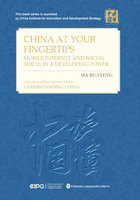
I. “Established by the Age of 30”
On September 20, 2017, many media accounts on Sina Weibo – China’s version of Twitter – sent the same message in commemoration of the 30th anniversary of the first email sent from China via dial-up Internet access. That email was sent to the University of Karlsruhe in Germany from Beijing via Italy, and it simply contained the short message “Across the Great Wall we can reach every corner in the world.”
Two years after that first email was sent, the Chinese Academy of Sciences took on the task of designing and building China’s first demonstration network. Five years later, in 1994, the NCPC (the predecessor of CERNET), China’s first independently designed and built backbone network using TCP/IP, connected to the World Wide Web. The building of China’s Internet infrastructure then went into high gear with the establishment of the China Science and Technology Network (CSTNET), China Public Network (ChinaNet), China Education and Research Network (CERNET), and China Golden Bridge Network (ChinaGBN) one after another over two years. These networks formed a backbone network that covered major cities all over China and connected them to the global network.
By this time, more or less a decade had passed since that first email. The entire process of starting the Chinese Internet was long and difficult without a doubt, but the process never strayed from being open and was always moving forward. The long-planned completion of the Chinese Internet’s backbone network infrastructure and its connection to the world’s networks in that first decade allowed the Chinese Internet to evolve from “null” to “one,” and laid a solid foundation for the entire Internet industry to experience explosive growth.
In 1997, marked by the founding of NetEase Inc., the Chinese Internet entered its first entrepreneurial golden age and started the journey from “one” to “an unknown infinite variable.” Leading Chinese Internet companies including Sohu, Sina, Alibaba, JD.com, Ctrip, and Baidu were established during the next three years, and classic Internet business models such as web portals, instant messaging, e-commerce, and search engines along with the concept of venture capital investing were introduced into China. Entering the 21st century, Sina, NetEase, and Sohu, the three top web portals in the Chinese market, each listed on the NASDAQ Stock Market, triggering a wave of Chinese Internet businesses listing overseas. The total number of Internet users in China grew 100 times during the next decade, rising from 2.1 million in 1998 to 210 million in 2007. Today, these companies established during the first entrepreneurial golden age are still active throughout China’s Internet market.
Fast forward to September 2007, when Apple released the first iPhone at the Moscone Center in San Francisco, California, USA. In 2009, China Mobile received the first license to operate a 3G network. With the iPhone 4 selling extremely well in China in 2010, China’s Internet rapidly entered the era of the mobile Internet, leading to a resurge of the entrepreneurial wave from a decade earlier. Startup companies with mobile technologies based on cloud computing and location-based services (LBS) have ascended to become “unicorn” companies, each valued at more than 1 billion US dollars; examples included Didi, a ride-sharing platform; iQiyi, a video platform; Ele.me, an online food delivery service; and Jinri Toutiao, a news and information content platform. During the same period of time, Tencent, Alibaba, and Sina also launched their own super apps, namely WeChat, Alipay, and Weibo, which are designed for smartphones to cater to the new habits of Chinese Internet users. The proportion of China’s total Internet users who use their phones to get online has risen rapidly from 12% in 2006 to 95% in 2016. This is the speed at which China moves, and it is also a world record.
Thirty years have gone by fast. Chinese society has undergone tremendous changes. China’s GDP has grown 61.1 times from 1.2 trillion yuan in 1987 to 74.4 trillion yuan in 2016. Over these 30 years, the compound annual growth rate of the GDP has reached 14.7%, which has set an economic growth record among the world’s major economies.
In these same thirty years, China’s Internet has undergone 10-year cycles, racing forward without any hesitation or hint of stopping. Presently, China’s Internet industry holds many of the world’s “number-one rankings.” In 2016, Alibaba’s total transaction volume over its entire platform, i.e. its gross merchandise volume, exceeded 3 trillion yuan and surpassed Walmart to become the world’s largest retailer. Lufax (also known as Lujinsuo), which was established in 2011, boasts the world’s largest P2P platform, with over 30 million registered users and a retail transaction volume of 1.54 trillion yuan in 2016. Tencent acquired Riot Games from the United States and Supercell from Finland, and yet prior to that, it already was the world’s highest-earning online gaming company. As of September 2017, the Tencent Charity platform had raised over 3 billion yuan for various charity projects with more than 140 million individual donations from Internet users.
Having become “established by the age of 30” (an admonition by Confucius about attainments in life), China’s Internet and steadily maturing companies have become the most active, open, inclusive, and vital part of the Chinese economy. Even more importantly, this is just the beginning for China’s Internet and Internet companies.